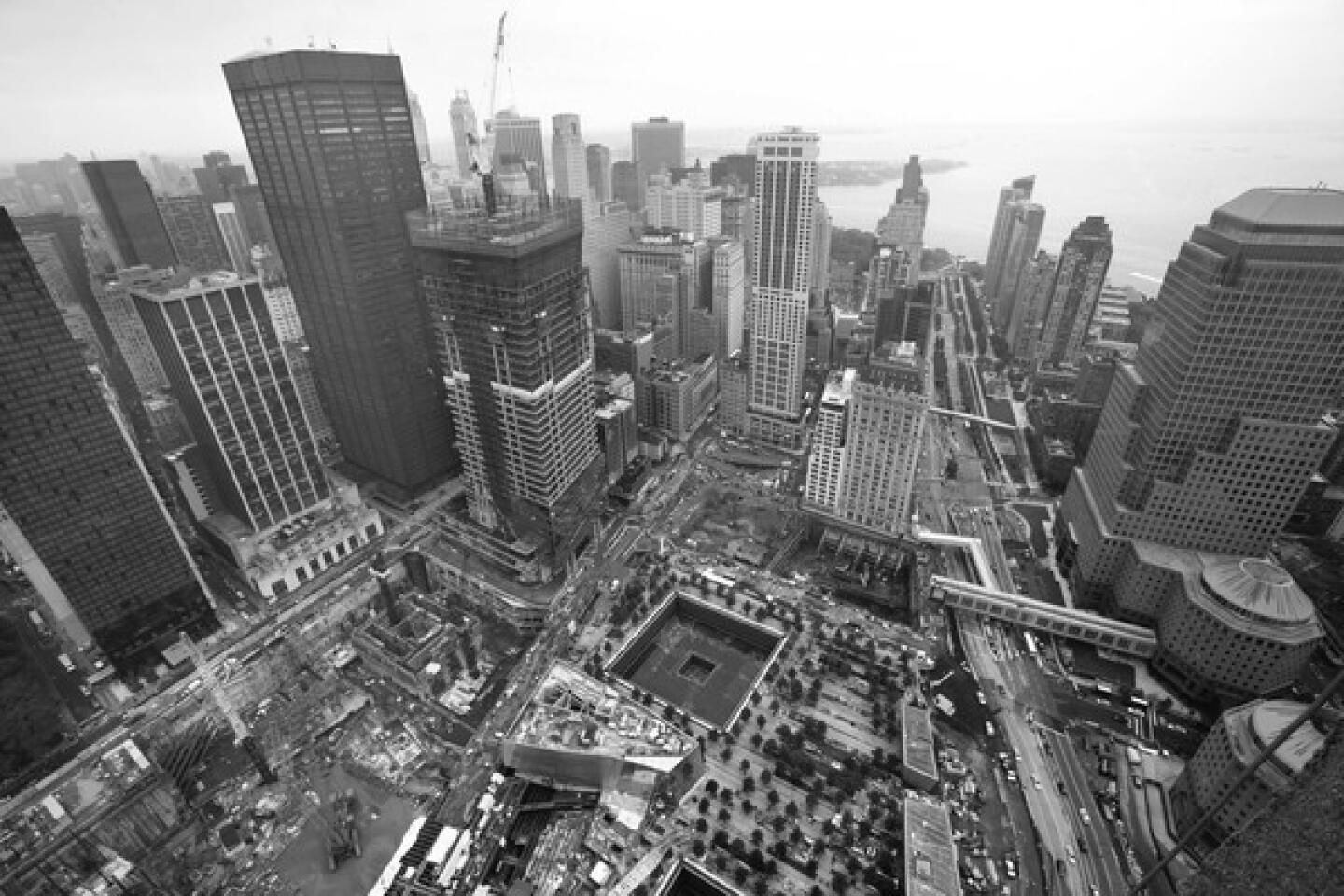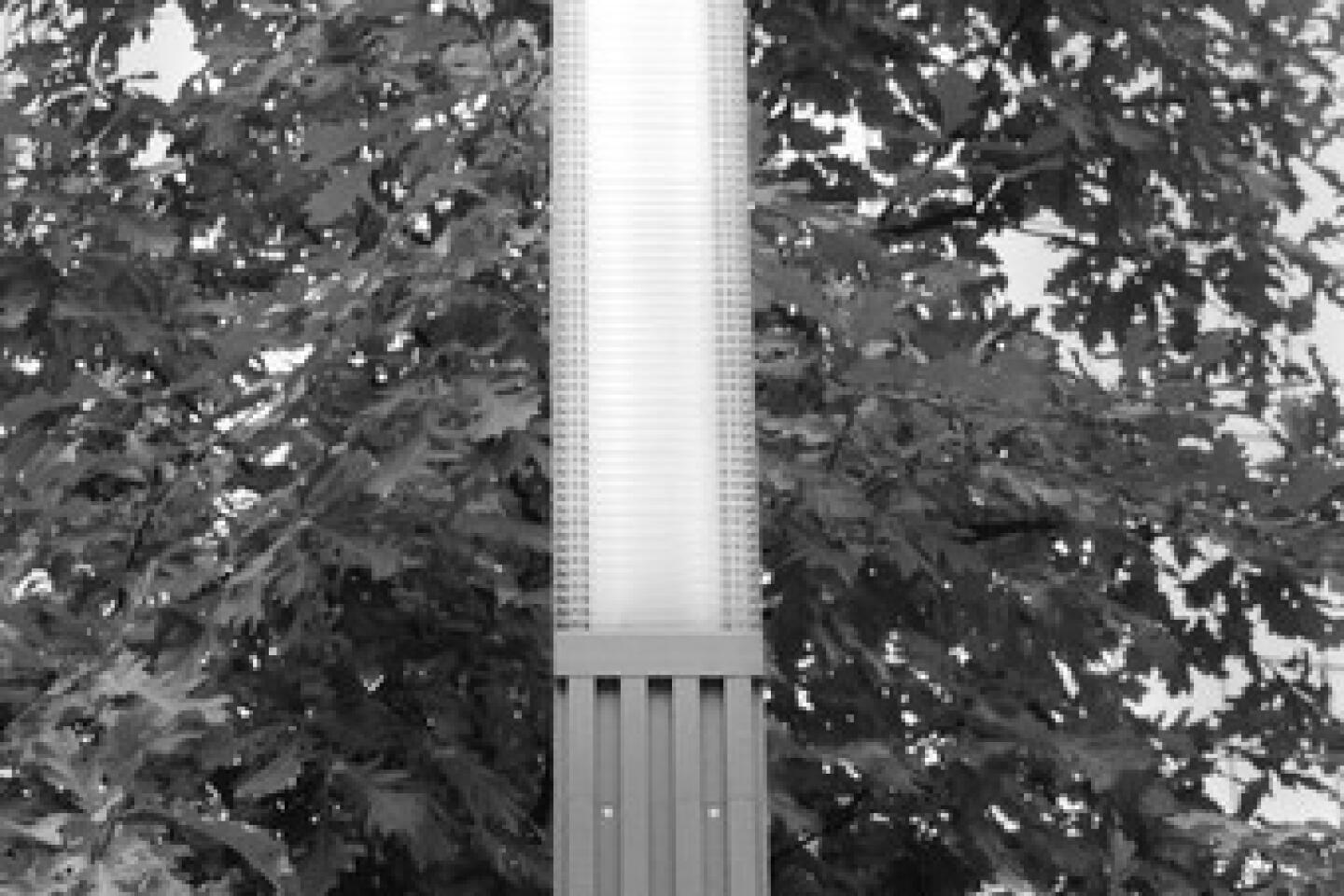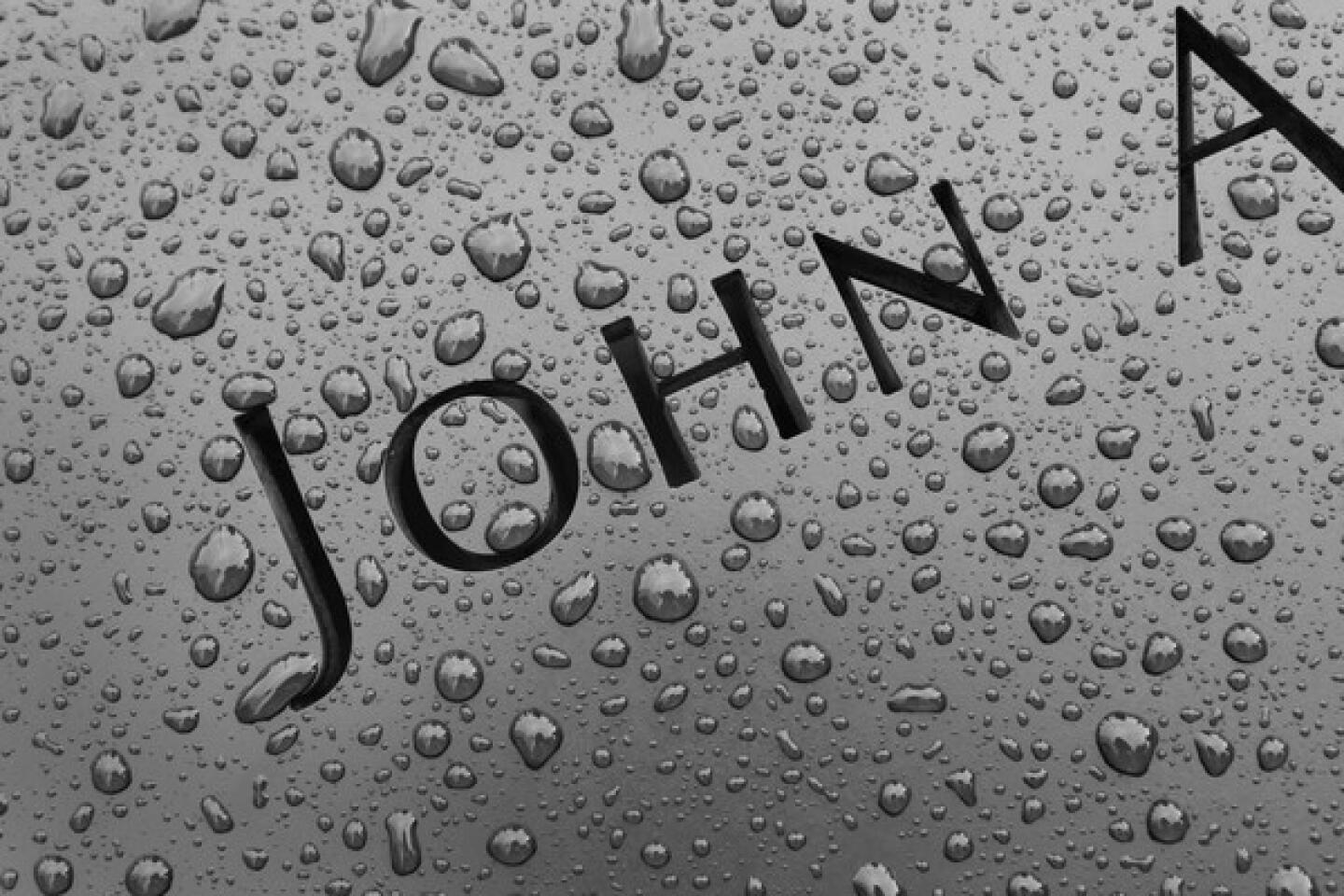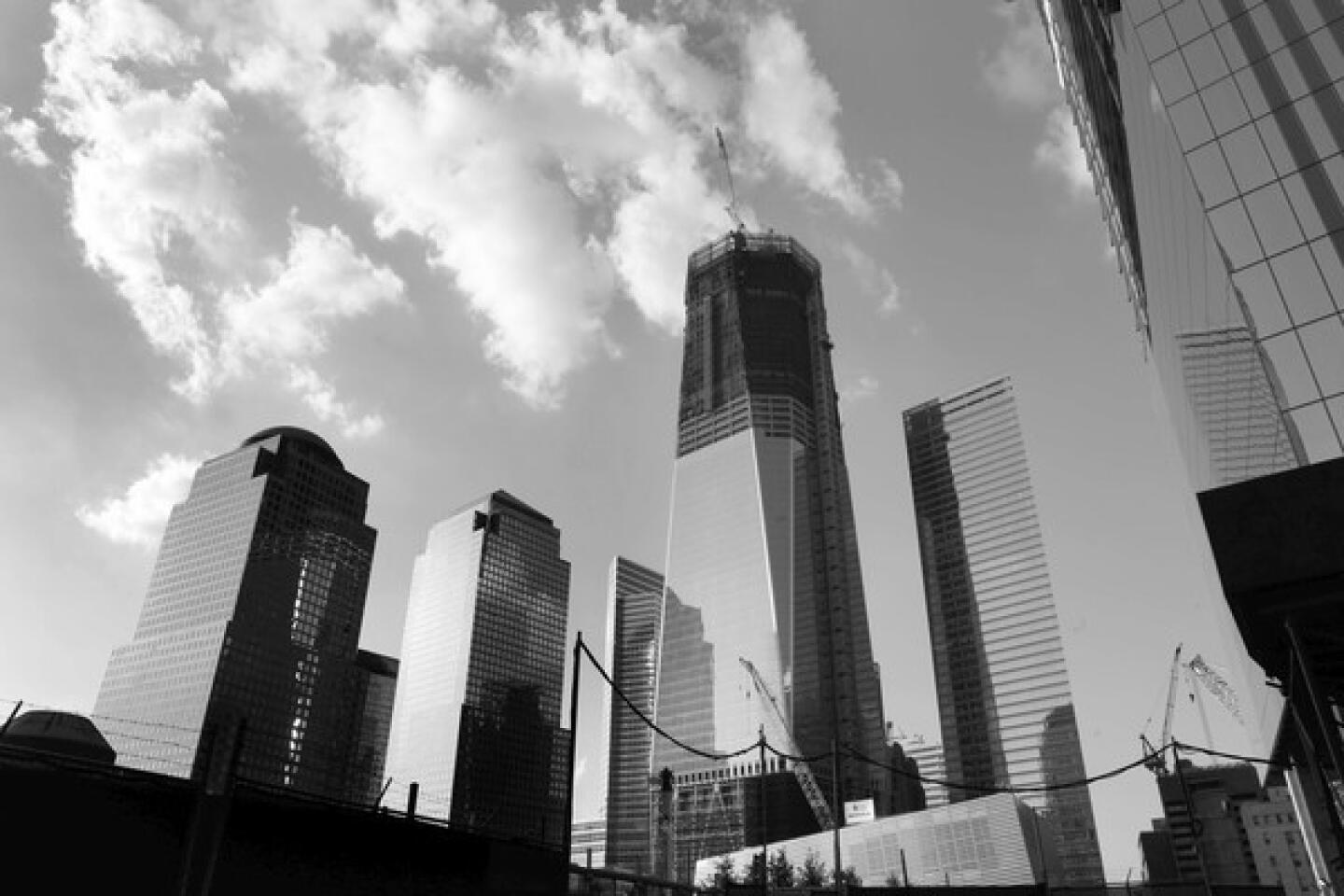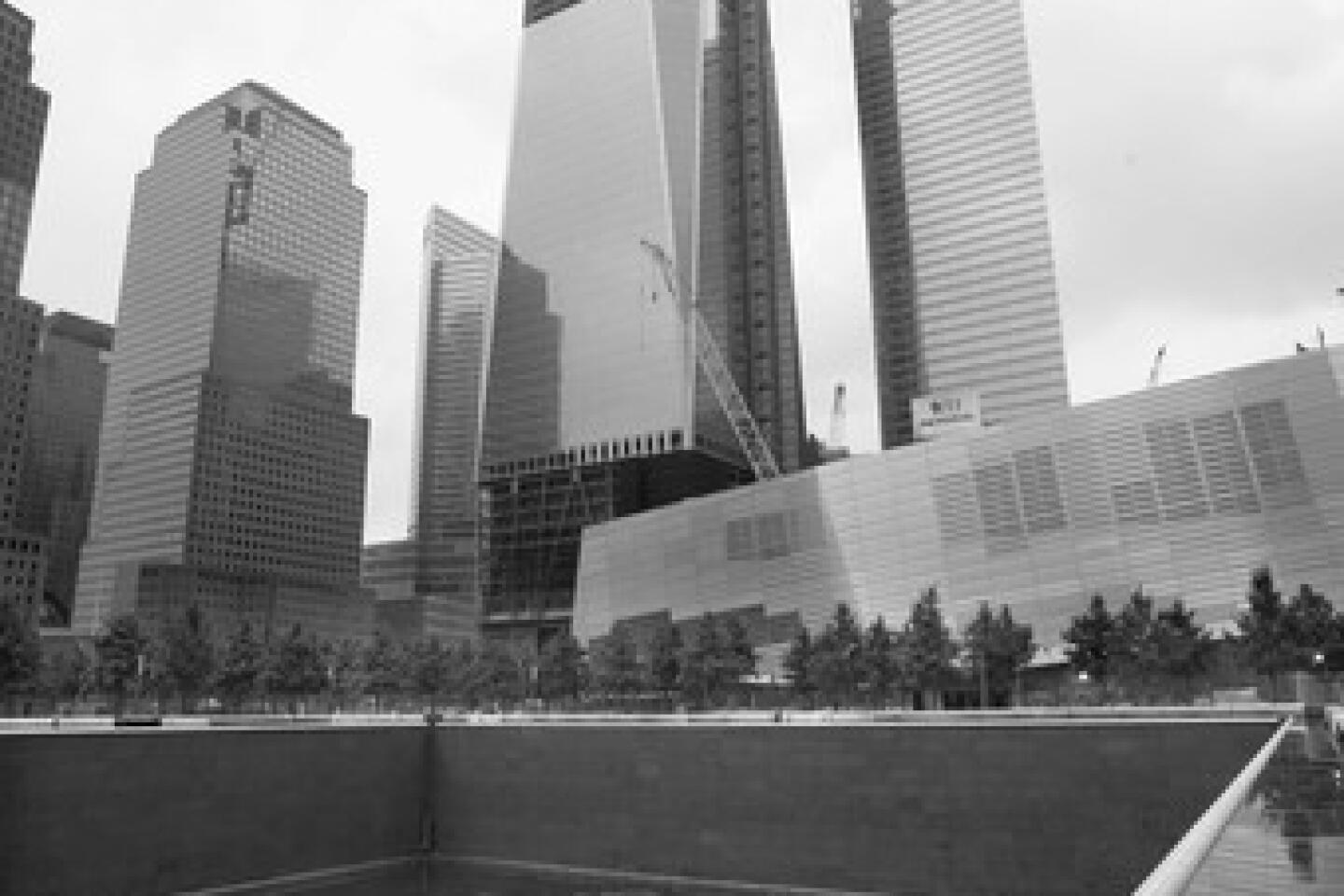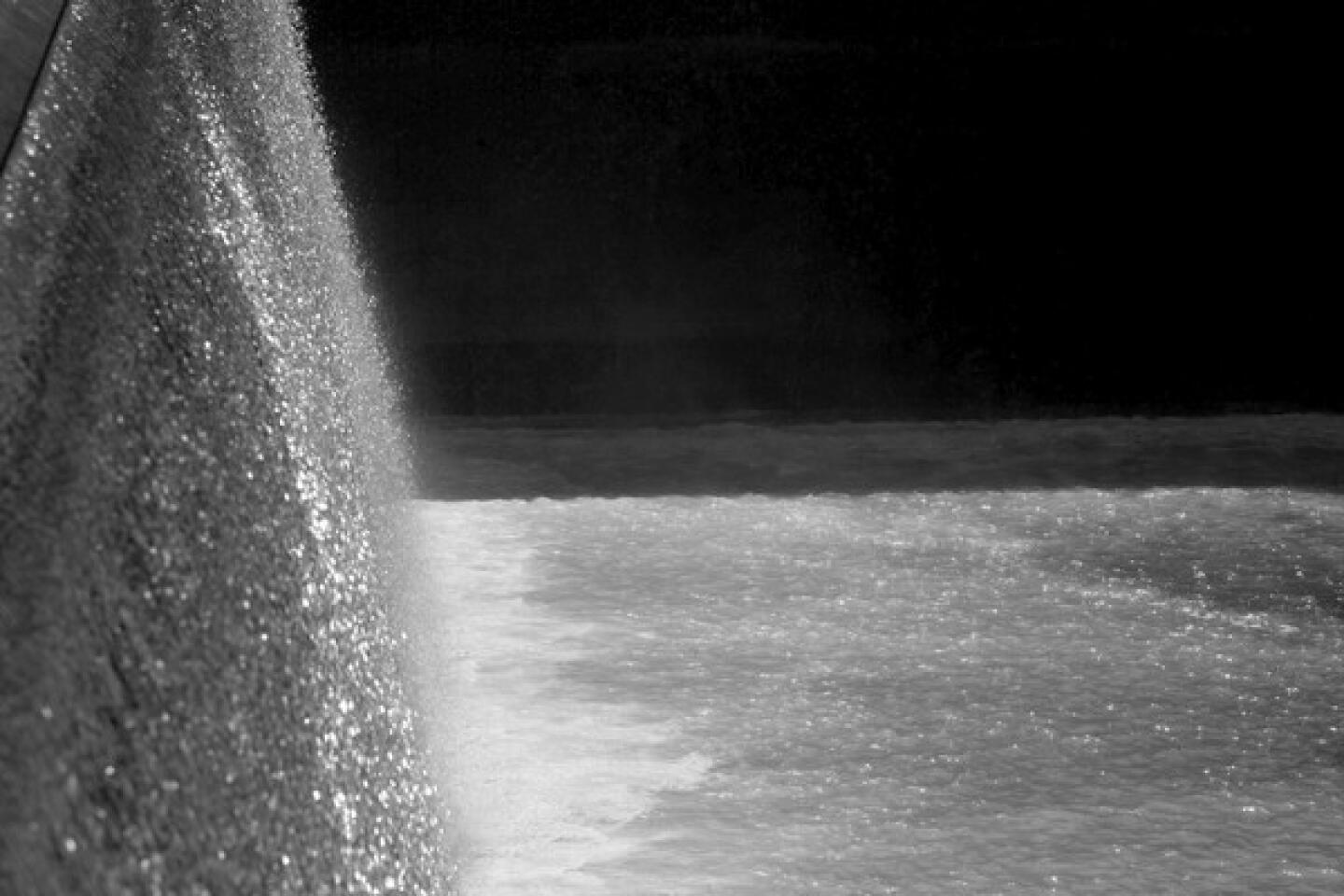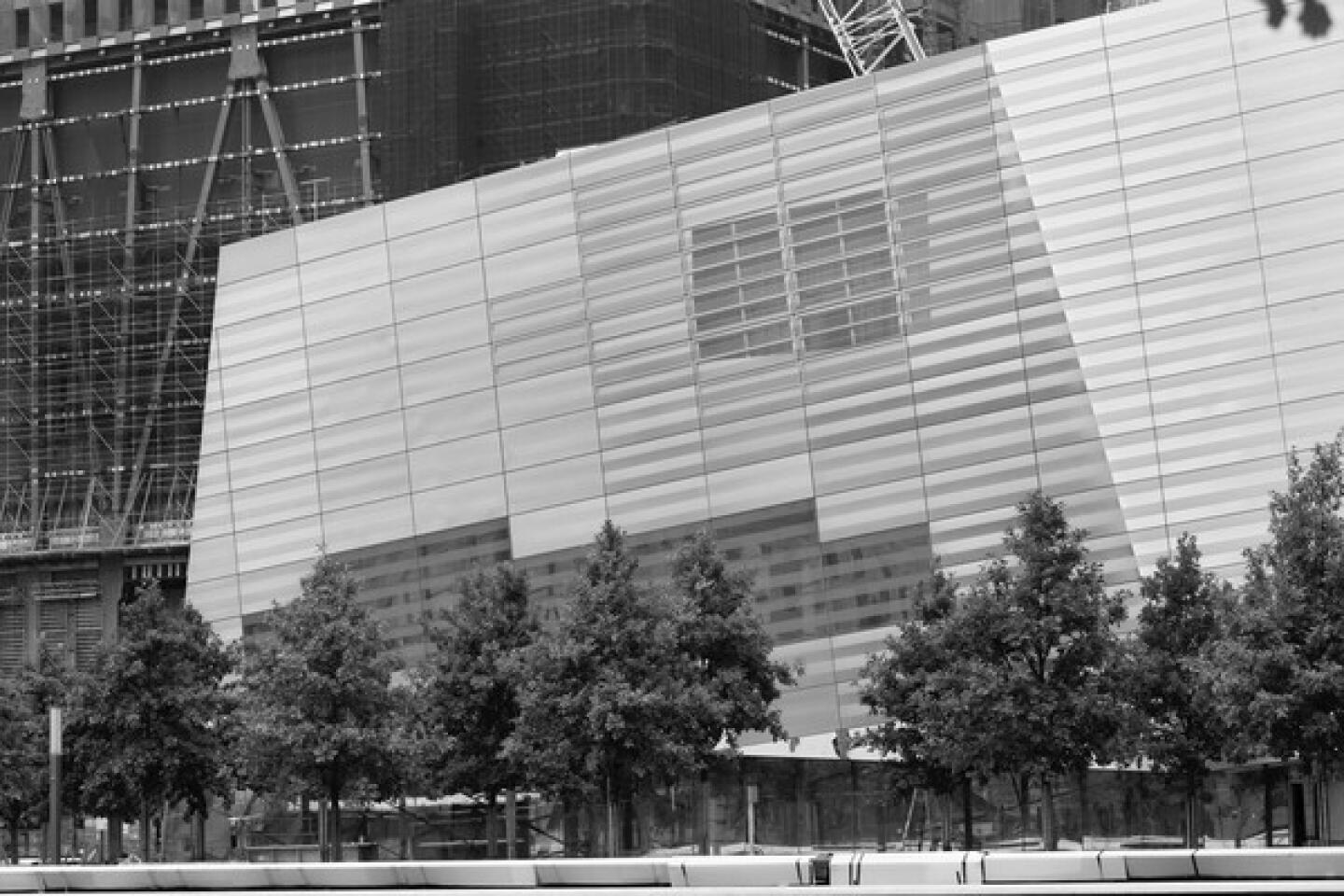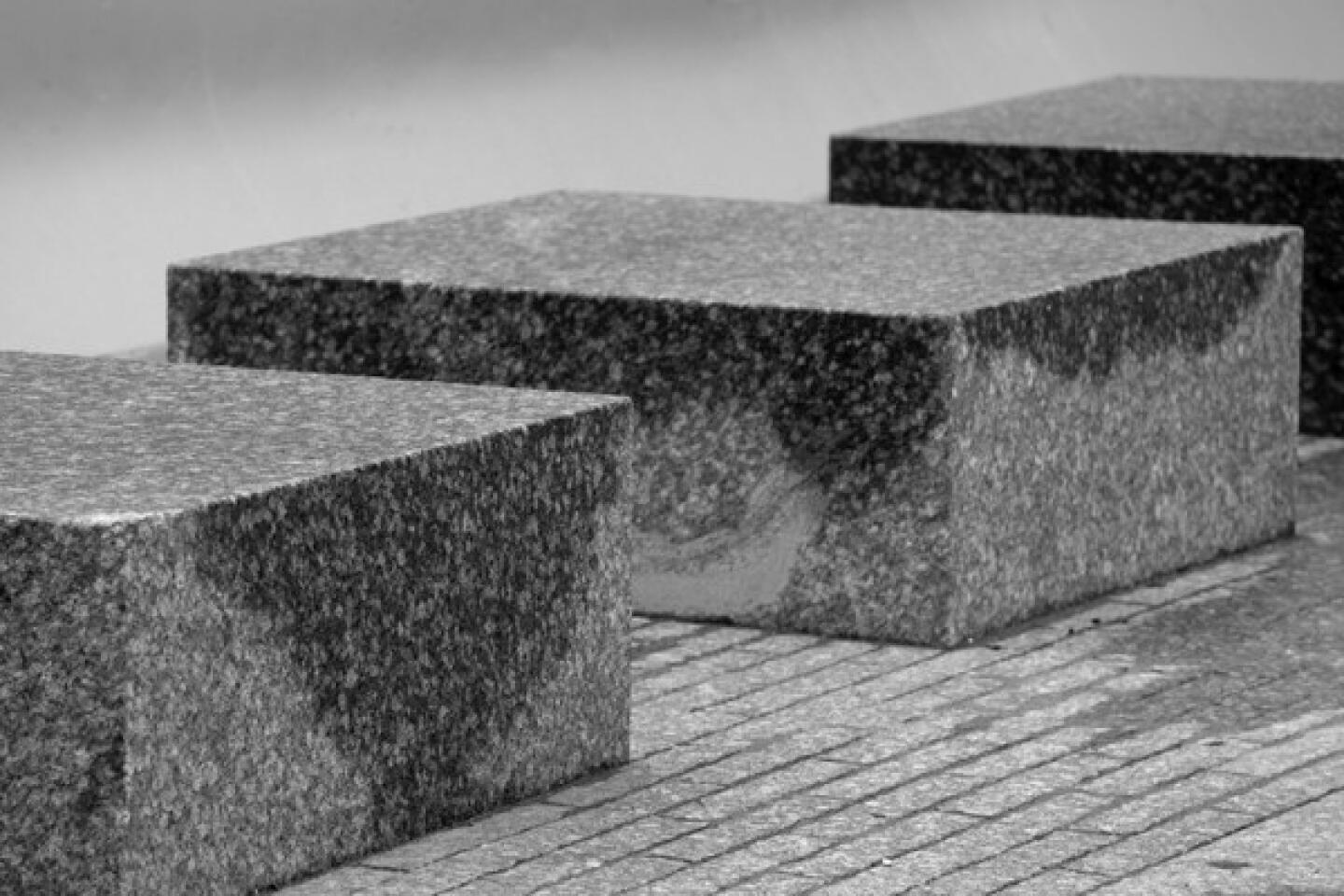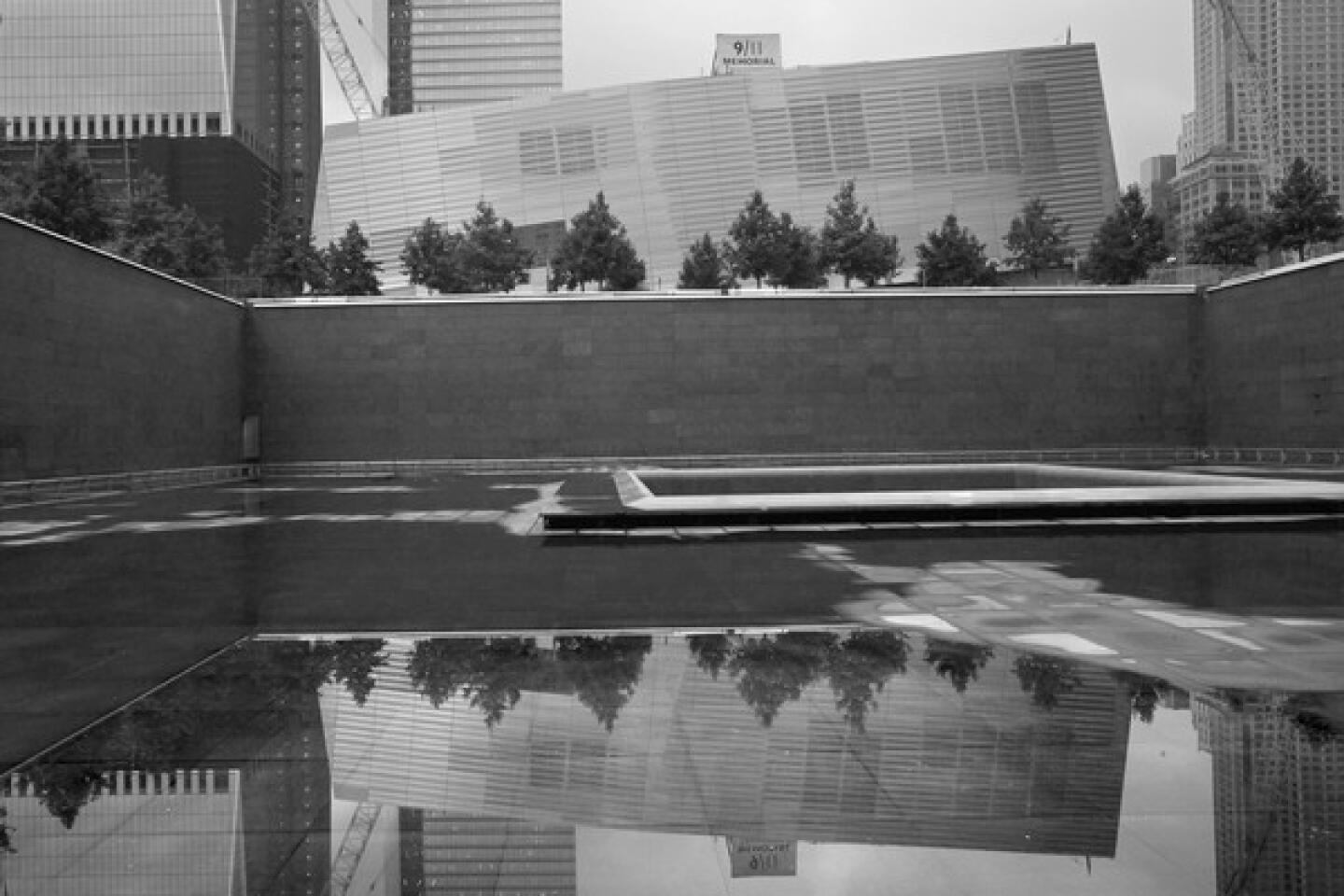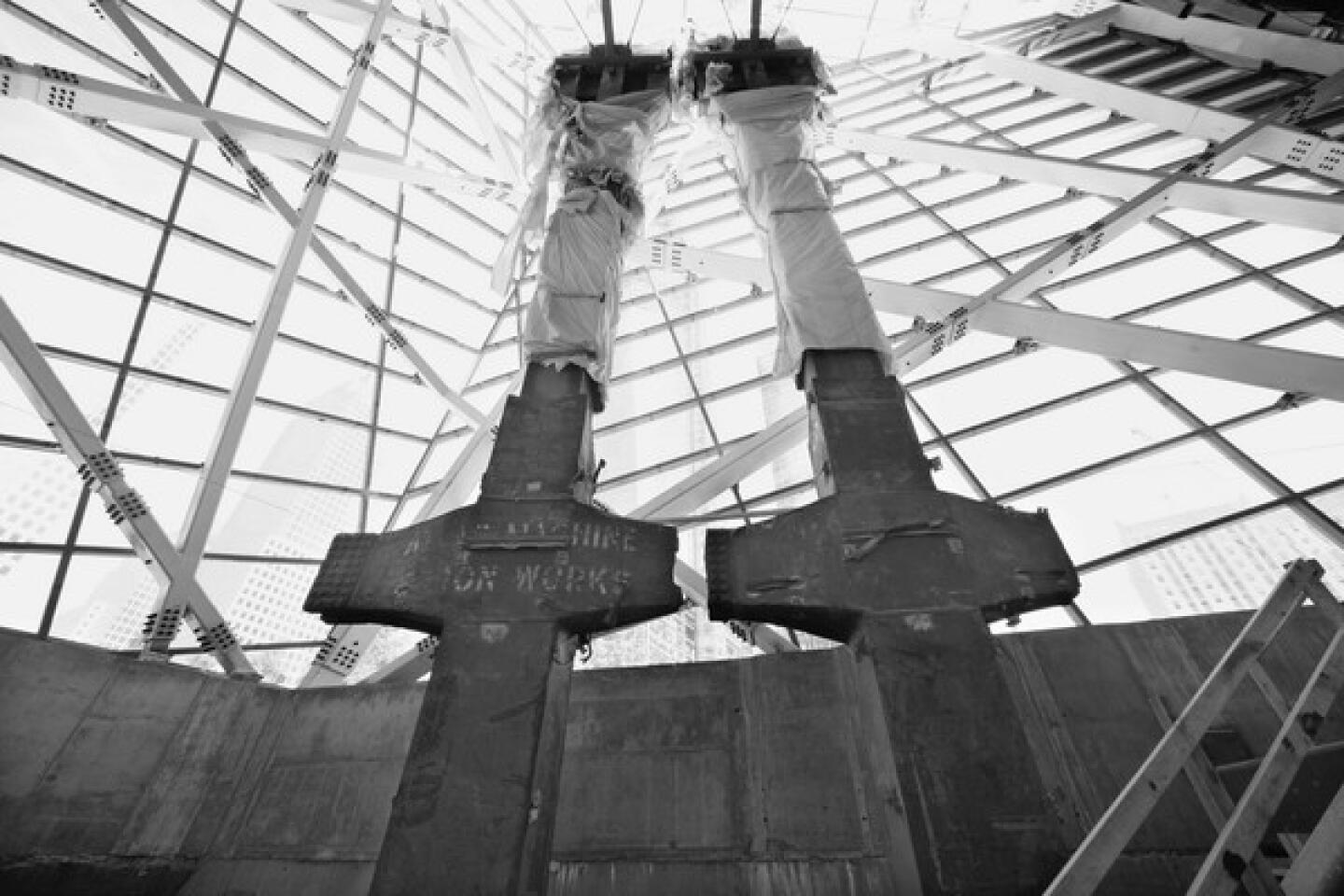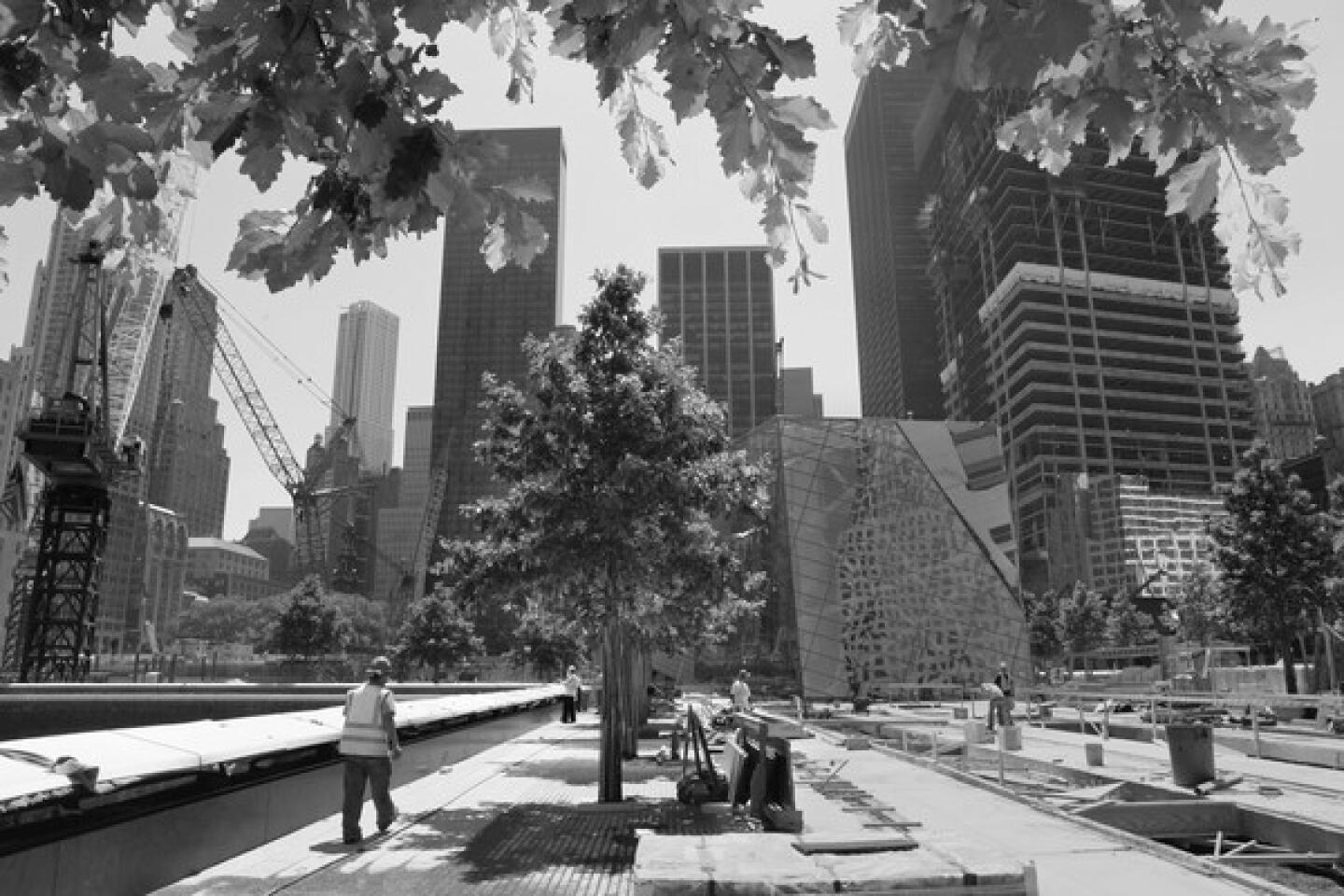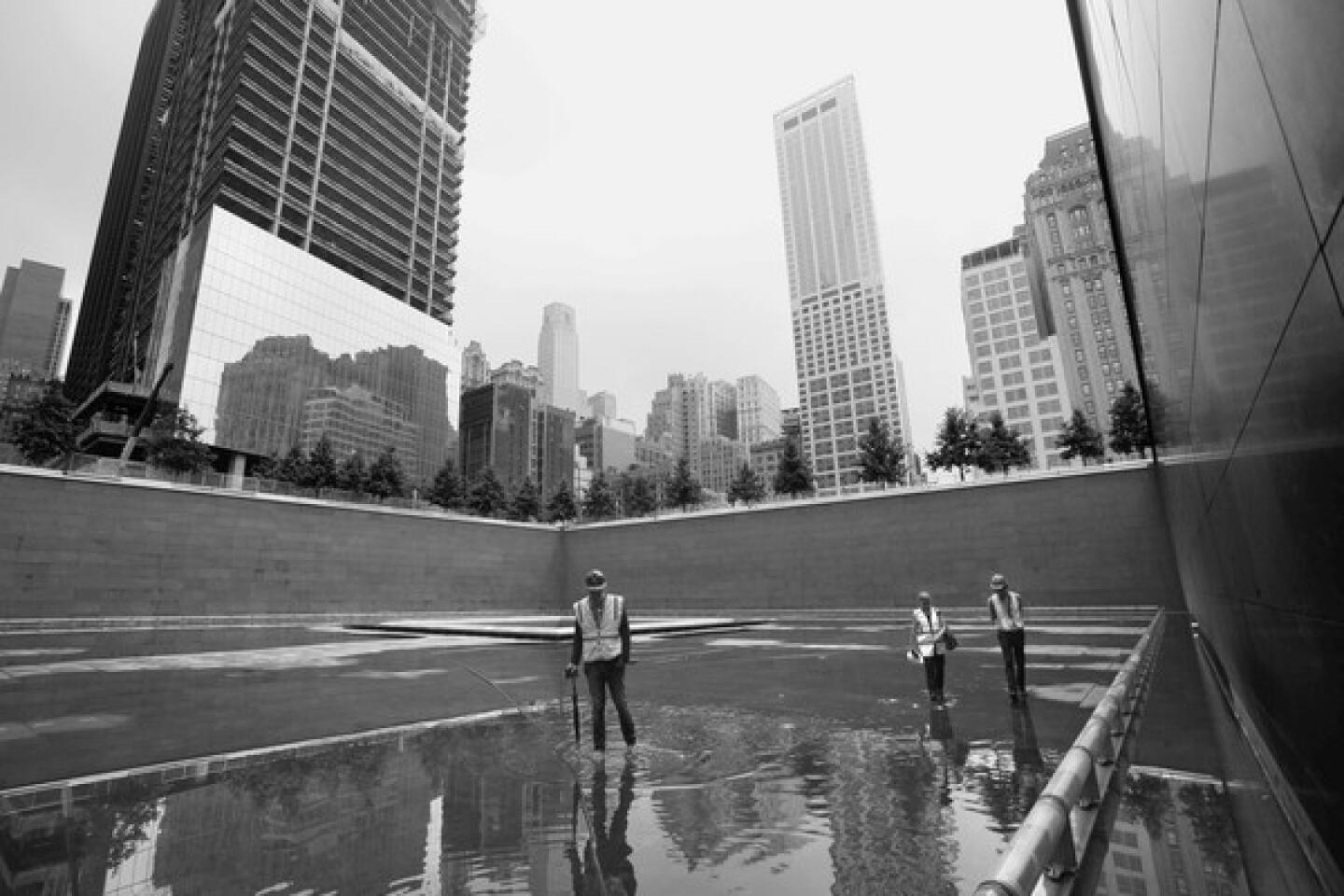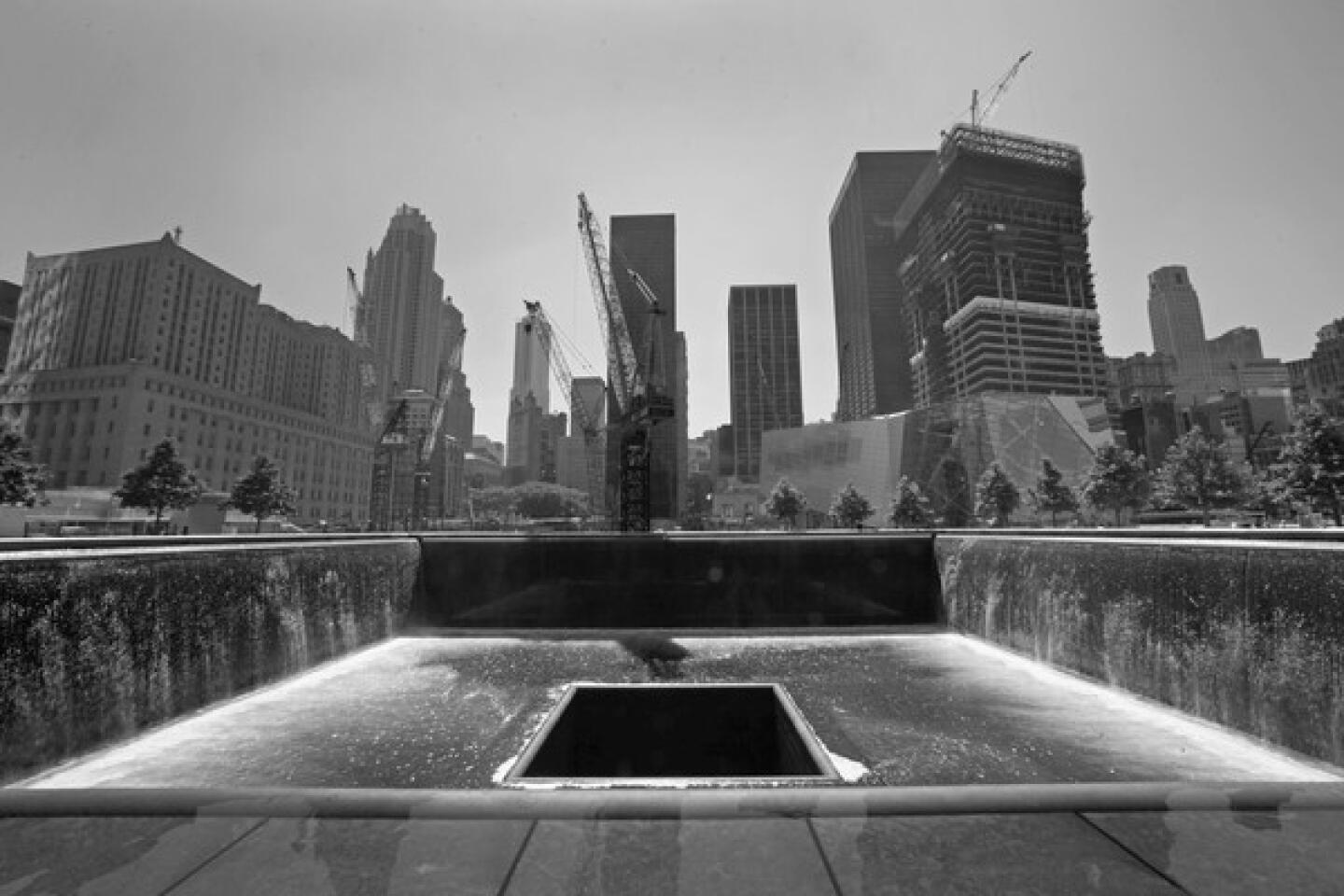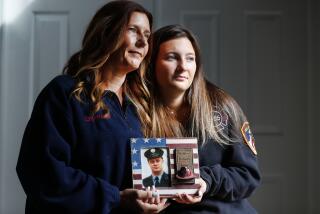Architect’s vision takes shape in Sept. 11 memorial
Reporting from New York — The burly construction workers ignore the lanky man as he dips beneath steel beams, plods through muddy puddles and inches his way past the spinning barrel of a cement mixer. In his neat jeans, button-down shirt and leather brogues, he clearly is not one of them.
But then, who is he?
Michael Arad has taken on a lot of roles since 2004, when he beat out 5,200 others vying to design the memorial to victims of the Sept. 11, 2001, attacks on the site of the fallen World Trade Center. He has been the architectural wunderkind emerging from obscurity to win the coveted job. He has been the stubborn outsider battling the powerful establishment to preserve his vision. He has been the crestfallen artist on the losing side of some of those squabbles. He has been the new father rejoicing in his growing family while immersed in the sorrow of those who lost their own loved ones 10 years ago.
Now, with the memorial nearly complete, he is the anonymous man in a hard hat, kneeling in the dirt, eyeing the lines, the lettering, the carefully carved corners and the rivulets of water, noticing tiny flaws that are invisible to most but infuriating to Arad.
“I’m the drill sergeant with the white glove,” Arad says with a laugh, trying to describe his latest role in advance of the formal unveiling of the memorial this Sept. 11. The creation, called “Reflecting Absence” and dominated by waterfalls flowing into the massive squares that once held the World Trade Center’s twin towers, opens to the public the following day.
Even as crowds begin strolling across the plaza to peer into the watery voids and to run their fingers over the names of victims carved into bronze parapets, construction cranes and heavy machinery will be grinding and hammering around them.
A transportation hub is being carved out beneath the site, which covers 16 acres. Skyscrapers are rising on the roughly 81/2 acres not covered by the memorial. A 9/11 Memorial Museum is being built near the spot where one of the towers stood. But if Arad’s vision holds true, the racket won’t detract from the memorial, which — like its designer — has weathered twists and setbacks to make its mark in New York City. Arad hopes that in years to come, the memorial will change the way people view public spaces.
“We think of these as spaces for frivolous recreation, where you hang out,” Arad said of spots such as Central Park or Union Square. “But after the attacks, they became places where we created a sense of community. They didn’t just bring us together physically. They brought us together emotionally.”
One sleepless night shortly after the attacks, Arad found himself in one such space — Washington Square Park in Manhattan’s Greenwich Village — along with hundreds of other strangers. They had all converged for an impromptu candlelight vigil.
For Arad, who was then 32, the sight of city dwellers famous for thick skins and icy stares coming together to share their grief and support one another was an epiphany. He was driven to show that even cranky, crowded Manhattan had the room — and the need — for a place of quiet contemplation. A sort of “urban living room,” said Arad, who grew up in Israel and spent a year as a ski bum in Colorado before settling on architecture over his original career choice, law.
“It was important for me not to make it solely a memorial spot, but to make it a part of the city,” said Arad. “I didn’t want this to become a place that reflected self-pity, because I didn’t see that in any way in New York. What I saw in New York was the best of humanity and quiet determination not to let this attack change who we are. I wanted to bring that to this memorial.”
Before a 13-member jury — which included Vietnam Veterans Memorial designer Maya Lin, city officials, artists and one relative of a Sept. 11 victim — chose his design, Arad was virtually unknown. The graduate of Georgia Tech’s architecture school was working for the city’s Housing Authority, helping design police stations and other civil structures.
His initial design was considered too stark by jurors, who still named it one of eight finalists in 2003. Arad teamed up with landscape architect Peter Walker, and they added a grove of trees. In choosing the design in January 2004, jury Chairman Vartan Gregorian cited Arad’s use of the two footprints of the World Trade Center towers to create voids. Combined with trees to represent rebirth, “the result is a memorial that expresses both the incalculable loss of life, and regeneration,” Gregorian said.
As with everything involving the site, from the design of the new skyscrapers to the placement of unidentified remains in an underground section of the future museum, the memorial has been a source of controversy.
Even now, days before it opens, some survivors are dismayed with the result.
“I think they’re trying to sanitize the whole place,” said former Deputy Fire Chief Jim Riches, whose son, Jimmy Riches Jr., was killed while rescuing people from the World Trade Center.
“I don’t really think the trees belong. And the waterfalls? Do we really need the whole ‘Kumbaya’ thing?” said Riches, who had hoped the twin towers would be rebuilt. At the very least, he said, the victims’ ages and other personal information, such as their rank or professional affiliation, should be included on the parapets that ring each square. To not include that, Riches said, denies future generations the whole story.
Rosemary Cain, the mother of George Cain, another firefighter who died that day, agreed. “They DESERVE to have their rank” included, she wrote in an email. “THAT’S WHY THEY DIED!!!”
Nor is Rosaleen Tallon, whose brother, firefighter Sean Tallon, was killed on Sept. 11, a fan of the final design. But she said it was far better than Arad’s early plans, which would have required visitors to descend underground to see victims’ names — something many people said would be too unnerving given the history there.
“Thank God that people who do not want to have to go underground at ground zero do not have to now,” she said. “It turns out the current memorial experience is a far different one compared with what we were facing.”
The Sept. 11 anniversary commemoration also has been tainted by anger among firefighters and other first responders, who were not invited. President Obama, former President George W. Bush and a handful of city and state politicians will be at the ceremony, but Mayor Michael R. Bloomberg said his priority was to accommodate family members in the limited space.
Arad was portrayed over the years in media accounts as headstrong, difficult and an alienating figure. Losing his fight for the underground galleries — the ones that Tallon opposed — was especially bruising for him. “That was a very tough blow,” said Arad, who had to rework his original plan as a result.
It took five years just to sort out the name-placement issue, then additional time to refigure the parapets’ corners to ensure that people in wheelchairs would be able to see into the recessed squares.
The name placement proved the stickiest challenge, because of family members’ passionate views.
After accepting that random placement was too impersonal, Bloomberg asked families to suggest where their loved ones’ names should be. Some 1,200 responses came in, resulting in what Arad calls “meaningful adjacencies” based on stories behind the names. For example, Richard Barry Ross, a passenger on one of the planes that hit the World Trade Center, is next to Stacey Leigh Sanders, who worked in the towers and was the best friend of Ross’ daughter, Abigail.
“These things look random, but are anything but,” said Arad, who also had to decide what font to use for the lettering. He settled on Optima: “It has a bit of softness to it, but it’s not mechanical.”
Beneath the parapets — and invisible to people who will run their hands over the bronze, or lean on it to peer into the tower footprints — is a heating and cooling system to prevent visitors from burning or freezing their skin during extreme temperatures.
The parapets surround 30-foot-high cascades composed of streams of water separated by 11/2-inch ridges, which billow and move in the wind as they flow downward to create a misty curtain. The trees nearby are swamp oaks, selected in part because their leaves won’t change into blazing hues of gold, red and pink during the fall, thus helping to sustain the memorial’s stoic atmosphere.
For all the fighting, Arad appears delighted with the result and relieved that most of his job is done. And just as the project has undergone change over the years, so has Arad. He and his wife now have three children, all born since 2001, and the man whose love for Manhattan helped drive his winning design recently left the crowded island for a leafy area of Queens.
If the hot-headedness that defined him in his earlier years still exists, he doesn’t show it, and he says his vision for the memorial is firmly intact despite the design alterations that once seemed so crushing.
“You find a way to bring yourself to every project,” said Arad, who is now juggling two other projects: a rooftop farm for his son’s former school in Greenwich Village and a skyscraper in China. If Arad has his way, they will blend into their cities and become extensions of the buzz around them, just as he hopes “Reflecting Absence” will.
“Cities are unique artifacts. We make them, and they make us,” Arad said, pulling off his hard hat as he slipped through the site’s exit gates. “It’s not just steel and concrete.”
More to Read
Sign up for Essential California
The most important California stories and recommendations in your inbox every morning.
You may occasionally receive promotional content from the Los Angeles Times.
